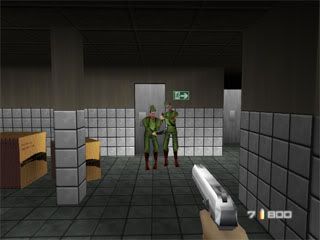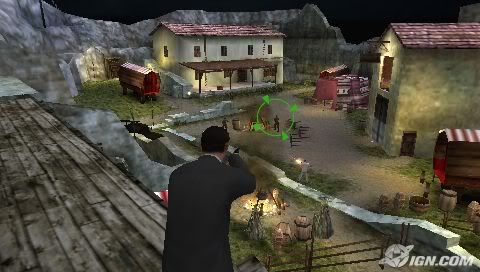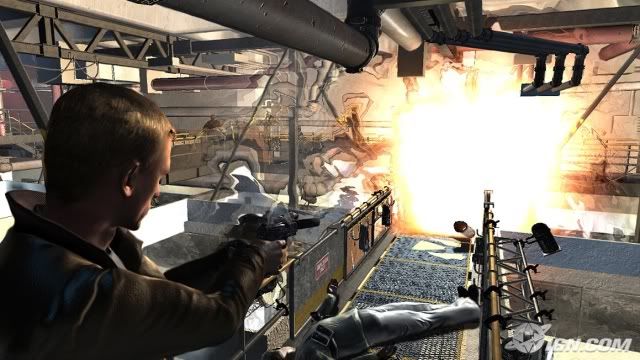Here is a link to my video "Newsreal"

And here is a variation of my final paper:
Digital technology has been hailed for the popular access that it provides to various forms of art and communication. It is also hailed for its enhancements in narrative storytelling, cartography, space exploration, anatomical record, and military mapping. (Mitchell, 3-10) This praise of the digital medium has also been met with considerable criticism. While this technology allows a new freedom in imagery, it comes with the sacrifice of the indexicality of the image and its ontological properties. The very binary composition of digital imagery, while accommodating layered manipulation, nullifies the ontology of the image. My experimental video Newsreal (2008) reflects on this notion through my wilful manipulation of digital imagery for the purposes of indicating the instable concept of ontology found in the digital image.
To compliment the analysis of this film it would be beneficial to refer to the theories of Lev Manovich. Digital technology has been revered for its advancements in storytelling traditions (with video games for example), yet Manovich insists on condemning the privilege that narrative receives during discussions of digital cinema. Digital technology may provide means of advancement in the story-telling tradition, however it violates certain revered philosophies of photography and conventional cinema. One of the defining principles of conventional cinematic processes is that cinema stresses “the aura of reality ‘captured’ on film.” (Manovich, 299) That is to say that the basic ingredient of traditional cinema is reality, organized and configured for the exposure and “capturing” onto celluloid. The images on the film are impressions of what existed at one time, in one form or another. As Manovich articulates, “Cinema is the art of the index; it is an attempt to make art of a footprint.” (Manovich, 295) Similarly, William Mitchell tastefully describes the photographic image as “fossilized light.” (Mitchell, 24) With the digitization of the image, whether through 3D computer animation or the digitization of live-action footage, the traditional cinematic image not only loses its indexical relationship with reality but also loses its privilege as the only material from which motion-pictures can be produced. The common material of digital imagery what Manovich refers to as the “pixel”, but could more accurately be identified as the binary digit. The reduction of the motion-picture to a series of androgynous digits or pixels increases its plasticity. This plasticity renders the “given truth” of the photographic image obsolete. Without indexicality, an image does not bear an existential bond with its referent, and therefore is no longer reliable as an ontological representation of reality.
The purpose of Newsreal is not to condemn digital imagery for its lack of ontology. The purpose is merely to indicate towards this philosophy and its relationship with digital imagery. The film is comprised of three parts: A war newsreel, an advertisement, and a magic show. The idea was for the film to take the form of the various clips that would have been shown before a theatrical film screening in the 1940s. I chose this period for its distinct aesthetic (for I intended to emulate it) and for the period’s imagery anchoring in indexical representation of reality. Each in its own way, the segments comment on the manipulability of the digital, and how reality becomes only a small factor in the material constructs of the digital image. Generally, I used digital filters to modify the video so that it was sepia toned. Another digital filter makes the video appear as though it was actually being projected on aged film, complete with simulated scratches on the celluloid. Additional projector and phonograph sound-effects further the film-viewing illusion. This use of digital technology immediately attempts to deceive the viewer into thinking that what they’re seeing is photographic, and therefore indexical to reality. In actuality, the raw footage in the video has passed through multiple digitization processes. All footage (whether “real” or computer engineered) was mediated through a Panasonic digital camcorder. In the case of the magic show, which was originally recorded photographically, I recorded the footage from YouTube, which is itself a digital platform.
The first segment in the film is a found-footage video collage imitating a WWII newsreel. I recorded the (digital) audio from a British news reel depicting WWII aerial raids from YouTube. I then proceeded to collect footage of various flight and war simulation video games with my digital camcorder. The games include Star Fox 64 (1997), StarCraft (1998), Body Harvest (1998), Wing Commander (1990), and Axelay (1992). I then replaced the authentic WWII footage with my newly captured, digitally constructed, video game footage, also adding in an orchestrated soundtrack. The effect is a seemingly authentic newsreel consisting entirely of computer-engineered imagery. I was able to digitally manipulate artificially-produced contemporary imagery in a way that seems period authentic, and indexical to reality. This is evidence of what Mitchell calls the mutability of the digital image. What he refers to is the rapid manipulation of digital information through the simplistic alteration of digits. “The mutability of digital data” says Manovich, “impairs the value of cinema recordings as documents of reality.” (Manovich, 307)

The second segment of the video is razor advertisement. The advertisement also stands as a metaphor. While the advertisement is attempting to sell razors, it never shows the actual razor, the razor in action, or even the effects of the razor. So while you are meant to believe that this razor is worthwhile (since we are told it is), you never see why you must believe in its proficiency. The only visual cues that support the razor’s proficiency are found-footage intellectual montages of CGI sequences from Hollywood blockbusters such as The Incredibles (2004) and Star Wars: Episode III: Revenge of the Sith (2005) which signify the act of shaving. All in all, there is nothing in this segment that is concretely indexical to the razor or its performance. One would not buy a product which they have not seen, and yet audiences accept illusions of CGI as believable representation of reality.

The magic show sequence is not only significant to this thesis in form, but also metaphorically. After all, performed magic can be seen as an illusory play which deceives viewers into believing what they see is real. The announcer emphasizes this by declaring, “If you don’t think seeing is believing, here’s a performer that will prove it!” Similarly, digital imagery creates illusory reality through manipulated presentation. In keeping with the theme of Newsreal, I decided to take a further step and manipulate the actual footage of the magic show. In order to emphasize the lack of ontology in the digital image I superimposed an animated clip of Winston Churchill’s face over-top of the magician’s. Thus, it is Winston Churchill’s magic show, and the digital effects employed force audiences to except it as the given truth of the image. This superimposition of digitally animated imagery over raw footage supports Lev Manovich’s claim that ontological footage becomes only one building element in a layering process when cinematic process becomes digital. Manovich adds that “cinema can no longer be clearly distinguished from animation. It is no longer an indexical media technology but, rather, a subgenre of painting.” (Manovich, 295) In a welcomed coincidental irony during the magic show, the narrator reassures the audience that “these pictures...are continuous and there are no camera tricks.”

As proven by the above examples, Newsreal reflects on this notion that the very binary composition of digital imagery, while accommodating layered manipulation, nullifies the ontology of the image. Through my wilful manipulation of digital imagery Newsreal indicates the instable concept of ontology found in the digital image. Thus, while this digital technology allows a new freedom in imagery, it comes with the sacrifice of the indexicality of the image and its ontological properties.
Bibliography:
- Mitchell, William J. The Reconfigured Eye : Visual Truth in the Post-photographic Era. Cambridge: MIT Press, 1994.
- Manovich, Lev. “Digital Cinema and the History of a Moving Image: Cinema the Art of the Index”, The Language of New Media. Cambridge: MIT Press, 2001








